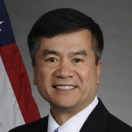
Ed. Note: This week the Obama Administration celebrating America’s entrepreneurs and small businesses as part of National Entrepreneurship Week. Join Commerce Secretary Gary Locke this Friday at 1 p.m. for a live chat on entrepreneurship and innovation on WhiteHouse.gov/live.
Innovation always has and always will be America’s global competitive advantage. Our ability to create products and services that help people around the world live healthier, wealthier and more productive lives was a big reason why the 20th century was the American century.
Innovation is how we built the strongest middle class the world had ever seen. And it’s a big part of how we’re going to rebuild the American middle class here in the 21st-century.
It begins with a commitment to research and development. The president’s proposed 2011 budget, while freezing domestic discretionary spending overall, includes a six percent increase for R&D, with special attention given to emerging sectors like 21st century infrastructure and manufacturing, clean energy and biotechnology.
But R&D is only the first step in the innovation process. The next step is to find an entrepreneur to take that kernel of an idea or invention and turn it into a new product or a new business.
At the Commerce Department, I’ve set up a National Advisory Council on Innovation and Entrepreneurship made up of leading American innovators and entrepreneurs to help the federal government formulate policies that makes it easier for us to “move ideas from the lab to the marketplace”.
One such program is the inaugural i6 Challenge, a $12 million innovation competition administered by Commerce’s Economic Development Administration in partnership with the National Institutes of Health and the National Science Foundation.
The i6 Challenge identifies and provides support for the nation’s best ideas for technology commercialization and entrepreneurship in six different regions of the country.
In the Philadelphia Region, this included a partnership between Innovation Works, Inc. and Carnegie Mellon University, which will create the “Agile Innovation System,” to accelerate the commercialization of technologies being developed within the region’s universities and small businesses.
In the Pacific Nothwest, Seattle Region, The Oregon Translational Research & Drug Development Institute, the Oregon Nanoscience & Microtechnologies Institute, and the Oregon Built Environment & Sustainable Technologies Center are joining forces to create the first comprehensive, innovation infrastructure – the Oregon Innovation Cluster. This will ensure that good ideas don’t get lost in the dreaded “valley of death,” where promising inventions fail to make it into the marketplace because they can’t get funding or aren’t being commercialized by a qualified entrepreneur.
Through an effort led by the Small Business Administration, we are also reinventing the Small Business Innovation Research (SBIR) Program, one of largest federal innovation programs, to encourage entrepreneurship. The program has provided early funding to technology companies such as Qualcomm, Semantech, and Genentech – and among other things, it is focused on using small businesses to meet federal research and development needs, enhancing private-sector commercialization of innovation, and increasing women and minority participation in technological innovation.
These programs have different goals and different methods, but they are all fundamentally working towards the same thing. As President Obama has said we are striving for a future “where prosperity is fueled not by excessive debt, reckless speculation and fleeing profit; but is instead built by skilled, productive workers; by sound investments that will spread opportunity at home and allow this nation to lead the world in technologies, innovations and discoveries that will shape the 21st century.”


